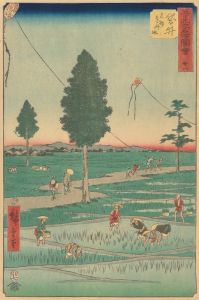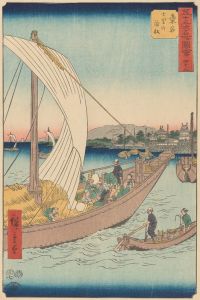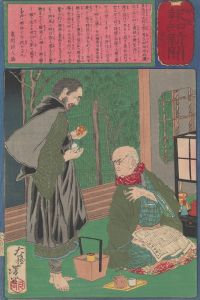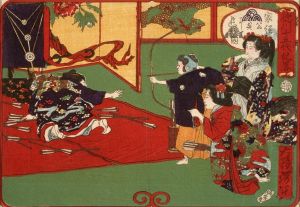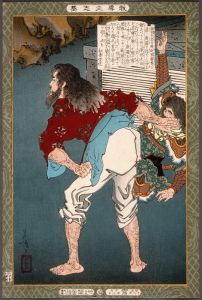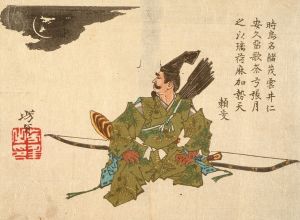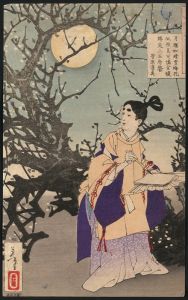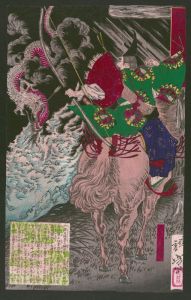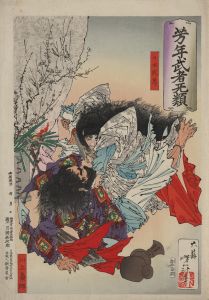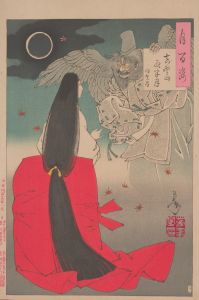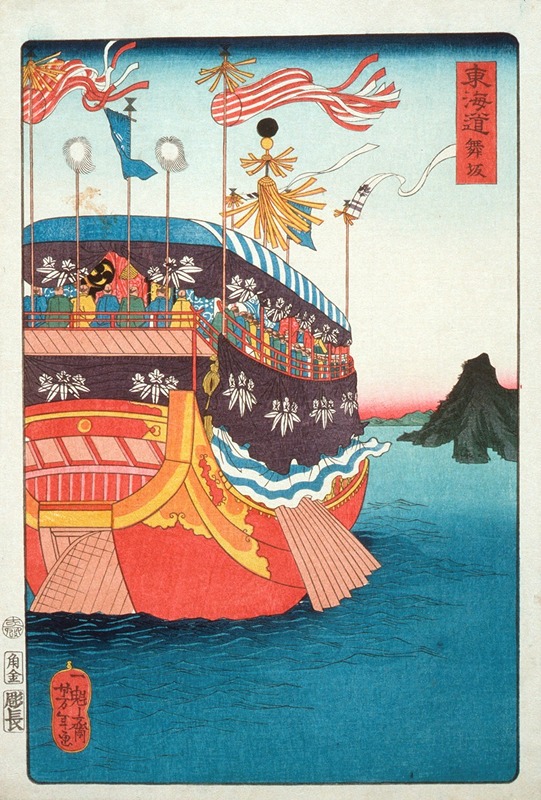
Maisaka
A hand-painted replica of Tsukioka Yoshitoshi’s masterpiece Maisaka, meticulously crafted by professional artists to capture the true essence of the original. Each piece is created with museum-quality canvas and rare mineral pigments, carefully painted by experienced artists with delicate brushstrokes and rich, layered colors to perfectly recreate the texture of the original artwork. Unlike machine-printed reproductions, this hand-painted version brings the painting to life, infused with the artist’s emotions and skill in every stroke. Whether for personal collection or home decoration, it instantly elevates the artistic atmosphere of any space.
Tsukioka Yoshitoshi (1839–1892) was a prominent Japanese ukiyo-e artist, known for his innovative and dramatic woodblock prints. He is often regarded as one of the last great masters of the ukiyo-e tradition, which flourished during the Edo period and into the early Meiji era. Yoshitoshi's works are celebrated for their vivid imagery, emotional depth, and technical mastery, as well as their ability to bridge traditional Japanese art with the rapidly modernizing society of the late 19th century.
One of Yoshitoshi's notable series is "One Hundred Views of the Moon" (Tsuki Hyakushi), created between 1885 and 1892. This series consists of 100 woodblock prints, each depicting a scene inspired by the moon, often drawing from Japanese history, folklore, literature, and theater. The prints in this series are widely regarded as some of Yoshitoshi's finest work, showcasing his ability to blend traditional themes with innovative compositions and a keen sense of storytelling.
The print "Maisaka" is part of this celebrated series. It depicts a scene associated with the Tōkaidō, the historic road connecting Edo (modern-day Tokyo) to Kyoto. Maisaka is one of the 53 stations along the Tōkaidō, and Yoshitoshi's depiction reflects his interest in capturing the cultural and historical significance of these locations. In this print, Yoshitoshi portrays a serene and atmospheric view of the moonlit landscape, with figures and elements that evoke the rich history and folklore tied to the region. The composition demonstrates Yoshitoshi's skill in using light, shadow, and texture to create a sense of depth and mood.
As with many of Yoshitoshi's works, "Maisaka" reflects the artist's deep appreciation for traditional Japanese aesthetics while also incorporating his unique artistic vision. The print is a testament to Yoshitoshi's ability to convey complex narratives and emotions through the medium of woodblock printing, and it remains a significant example of his contribution to the ukiyo-e tradition.
Yoshitoshi's "One Hundred Views of the Moon" series, including "Maisaka," continues to be highly regarded by art historians and collectors. It represents a pivotal moment in Japanese art history, capturing the transition from the Edo period to the Meiji era and the enduring influence of traditional Japanese culture in a rapidly changing world.





